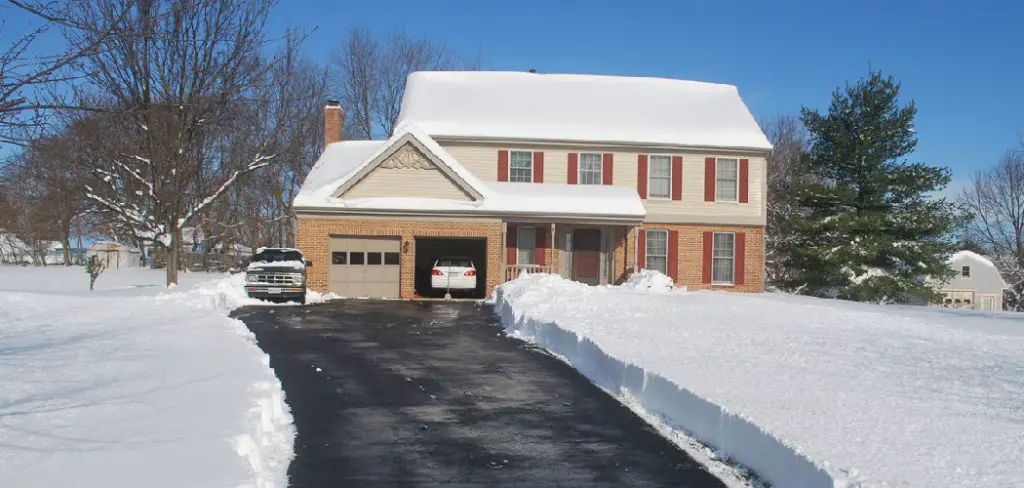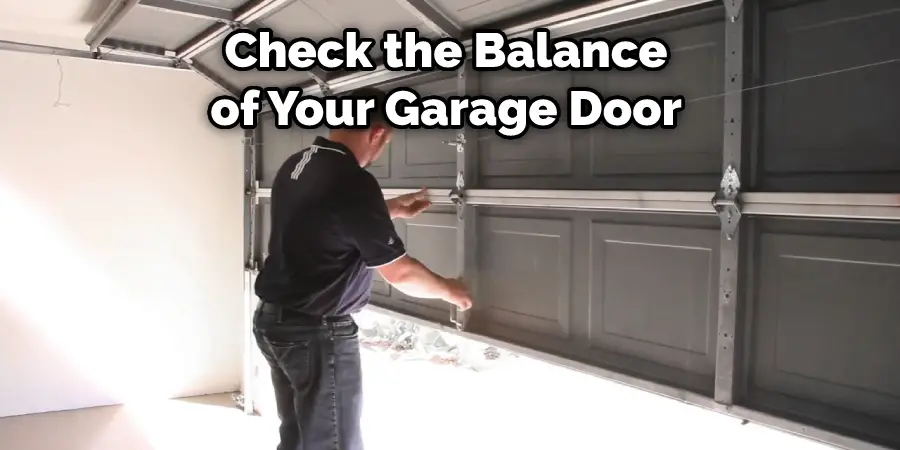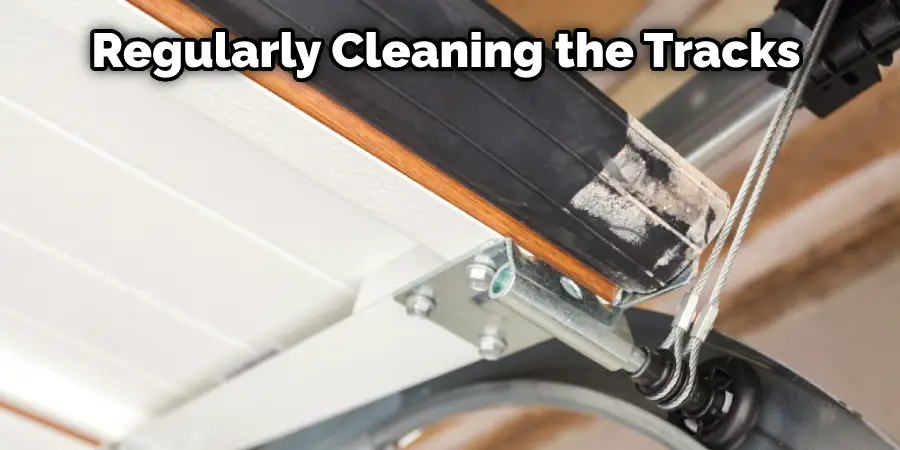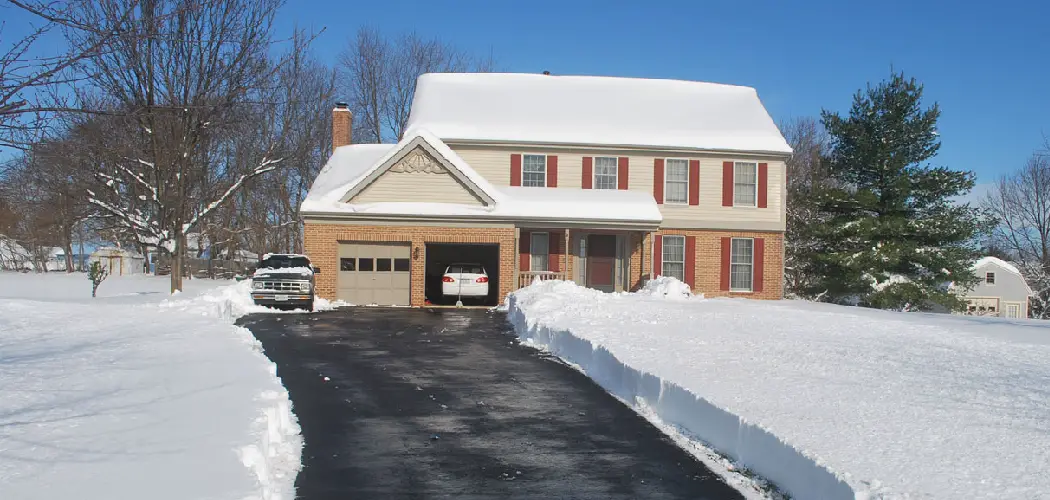As the colder months approach, it’s important to take steps to winterize your garage door. This will help to prevent damage from the elements and keep your door functioning properly. The most important step is to insulate the door. This can be done with weatherstripping or by installing a garage door insulation kit.

You should also seal any cracks or gaps around the door. In addition, it’s a good idea to lubricate the door tracks and hardware regularly. By taking these simple steps, you can help to ensure that your garage door will continue to work properly for years to come. This blog post will teach you how to winterize garage door.
Summary: Winterizing your garage door is important to ensure that it functions well in colder temperatures. During the winter, your garage door can be affected by factors such as temperature changes, moisture, and snow or ice buildup. To ensure that your door operates smoothly, you should inspect and maintain the door regularly. You should also lubricate all moving parts such as hinges, rollers, and springs with a silicone-based lubricant to prevent damage from the cold.
Step by Step Processes for How to Winterize Garage Door
Step 1: Inspect the Garage Door for Wear and Damage
Before winterizing your garage door, conduct a thorough inspection to identify any signs of wear, damage, or potential issues that may be exacerbated by cold weather. Check the door’s panels, tracks, springs, cables, rollers, and hinges for any signs of damage, rust, or wear. Make note of any necessary repairs or replacements.
Step 2: Clean the Garage Door and Tracks
Remove dirt, debris, and cobwebs from the garage door’s surface, tracks, and rollers. Use a soft brush or cloth to clean the door and tracks gently. For stubborn dirt, use a mild detergent and water solution. Ensure the tracks are free of obstructions that could interfere with the door’s operation.
Step 3: Lubricate Moving Parts
Lubricate the garage door’s moving parts, including the rollers, hinges, tracks, and springs. Use a silicone-based lubricant or garage door-specific lubricant to prevent the parts from freezing and ensure smooth operation. Avoid using heavy grease or oil, as these can attract dirt and debris, which can cause issues during the winter months.
Step 4: Inspect and Replace Weatherstripping
Examine the weatherstripping along the bottom and sides of the garage door. If it is cracked, brittle, or damaged, replace it to ensure a tight seal against cold air and moisture. Weatherstripping can be purchased at most home improvement stores and is typically easy to install.
Step 5: Install Insulation
If your garage door is not already insulated, consider adding insulation to help maintain a stable temperature inside the garage during the winter months. There are several insulation options available, including foam board insulation, reflective insulation, and garage door insulation kits. Follow the manufacturer’s instructions to ensure proper installation.
Step 6: Seal Gaps Around the Garage Door
Inspect the perimeter of the garage door for gaps or cracks that may allow cold air or moisture to enter. Use weatherproof caulking or expandable foam insulation to seal any gaps or cracks found during the inspection.
Step 7: Check the Garage Door’s Balance and Alignment
A balanced and well-aligned garage door is essential for smooth operation during the winter months. To check the door’s balance, disconnect the automatic opener and manually lift the door halfway. If the door stays in place, it is balanced. If it falls or rises, the springs may need adjustment. Consult a professional garage door technician for assistance if necessary.
Step 8: Test the Garage Door Opener’s Force Setting
During the winter months, the garage door opener may require more force to operate the door due to increased resistance from cold weather conditions. Test the opener’s force setting by standing outside the garage and using the remote to close the door. Place a broom or similar object in the door’s path to see if the door reverses when it encounters the obstacle. If the door does not reverse, consult your garage door opener’s manual to adjust the force setting.
Step 9: Replace the Garage Door Opener’s Batteries
Cold temperatures can reduce the performance of batteries in your garage door opener’s remote. Replace the batteries before the winter season to ensure reliable operation during colder months.
Step 10: Inspect and Maintain Garage Door Safety Sensors
Examine the garage door safety sensors for dirt, debris, or misalignment. Clean the sensors with a soft cloth and realign them if necessary. Test the sensors by closing the garage door and waving an object in front of the sensors. The door should reverse when the sensors detect the object.
Step 11: Keep the Garage Floor Clean and Dry
During the winter months, snow, ice, and moisture can accumulate on the garage floor, potentially causing slips and falls or damaging the garage door’s weatherstripping. Keep the garage floor clean and dry by regularly sweeping or mopping up any moisture or debris. Use absorbent mats or towels to soak up water that may be tracked in by vehicles or foot traffic.
Step 12: Ensure Proper Ventilation
A well-ventilated garage can help prevent condensation from forming on the garage door, which can lead to rust and other damage. Ensure that vents are clear of debris and that air can circulate freely throughout the garage.
Step 13: Prepare for Power Outages
Winter storms can lead to power outages, leaving you without the use of your automatic garage door opener. Familiarize yourself with your garage door opener’s manual release mechanism, which allows you to open and close the door manually during a power outage. Keep a flashlight handy in the garage for use during power outages.
Step 14: Schedule a Professional Inspection and Maintenance
Before winter sets in, consider scheduling a professional garage door inspection and maintenance appointment. A trained technician can identify any potential issues, perform necessary repairs or adjustments, and provide expert advice on maintaining your garage door during the winter months.
Step 15: Create a Winter Maintenance Routine
Develop a routine for maintaining your garage door throughout the winter months. Regularly inspect the door and its components for signs of wear, damage, or freezing. Keep the door, tracks, and moving parts clean and well-lubricated, and ensure that weatherstripping and insulation are in good condition.
By following these steps, you can effectively winterize your garage door, ensuring its smooth operation and longevity during the cold winter months. Regular maintenance and attention to potential issues will help prevent damage and ensure the safety and security of your garage and its contents.
Tips for How to Winterize Garage Door

- Check the balance of your garage door. An unbalanced door can stress the opener unnecessarily, leading to a shortened lifespan. Inspect your garage door for any cracks or damage. If you find any, make sure to repair them before winter sets in.
- Lubricate all moving parts on your garage door, including the opener chain, rollers, and hinges. This will help keep them working smoothly throughout the season. If you have a manual garage door, ensure the tracks are clear of debris or dirt. This can build up over time and make it difficult to open and close the door.
- Inspect your weatherstripping and replace it if necessary. This will help keep out drafts and moisture, both of which can damage your garage door. If you have an automatic garage door opener, ensure the sensors are clean and free of any obstructions. Dirty sensors can prevent the door from opening or closing properly.
- Test your garage door opener to make sure it is working properly. You should do this monthly to ensure that it is in good condition. Check the springs on your garage door to see if they need to be replaced. This is something that should be done every few years, as springs can weaken over time.
- If you have a wood garage door, make sure to seal it with a weatherproofing sealant. This will help keep out moisture and prevent the door from warping. If you have an automatic garage door opener, ensure the safety release is working properly. This prevents the door from closing if there is something in its path.
- Make sure your smoke detectors are working properly. This is important for any home, especially if you have a garage.
How Can You Make Sure Your Garage Door is Prepared for the Winter Months?
As the temperatures drop, it’s important to ensure that your garage door is properly winterized. By taking a few simple steps, you can help to ensure that your door will continue to work properly throughout the colder months. Here are a few tips on how to winterize your garage door:
- Inspect the door for any damage that may have occurred over the summer. In particular, check the weather stripping along the bottom of the door to see if it needs to be replaced.
- If your garage has an automatic opener, make sure that the batteries are fresh and that all of the moving parts are well-lubricated.
- If your door is not already equipped with a storm door, consider installing one. This will help to protect the door from the elements and keep it looking its best.
- Finally, ensure that you have a good-quality lock on your garage door to deter burglars.
By taking these simple steps, you can help to ensure that your garage door will continue to work properly throughout the winter months.
How Do You Prevent Ice and Snow Buildup on Your Garage Door?
If you live in an area where it snows, you know that one of the biggest hassles of winter is dealing with ice and snow buildup on your garage door. This is a pain to deal with daily, but it can also be dangerous if the ice and snow get too thick. The good news is that you can do a few things to prevent this from happening in the first place.
There are various types of seals available on the market, so be sure to do some research to find one that will work best for your particular door. Door seals will create a barrier between the outside elements and your garage, which will help to keep the ice and snow from getting inside.
Over time, dirt and debris can build up on the tracks, eventually leading to ice and snow buildup. By regularly cleaning the tracks, you can help to prevent this from happening.

Finally, if you are still having trouble with ice and snow buildup on your garage door, there are a variety of different products available that can help. Ice melt products are designed to melt the ice and snow on contact, making removing it much easier. Following these tips can help prevent ice and snow buildup on your garage door and make winter a little easier to deal with.
Is It Necessary to Call Any Professional to Winterize the Garage Door?
Winterizing your garage door is necessary if you want to keep it in good working shape and prevent any damage from freezing weather conditions. Some people might think they can get away with not winterizing, but this is simply not the case.
Calling a professional to winterize your garage door is always the best option to ensure that the job is done correctly. While it might cost a little bit of money upfront, it will save you money in the long run by preventing any costly repairs that might be needed if freezing temperatures damage the door.
How Much Will It Cost How to Winterize Garage Door?
The cost of winterizing your garage door will depend on a few factors. The first is the type of garage door you have. The process will be relatively simple and inexpensive if you have a standard steel door. However, if you have a more modern and expensive garage door, the process may be slightly more complicated and, therefore, more costly.
On average, the cost of winterizing a garage door will be between $100 and $200. However, the exact cost will vary depending on the factors mentioned above. If you are concerned about the cost of winterizing your garage door, you can always contact a professional to get an estimate.
Conclusion
As the temperatures start to drop, it’s important to take a few steps to winterize your garage door. This will help prevent drafts and moisture damage and properly keep your door working all winter. First, check the weather stripping around your door for any cracks or gaps. If you find any, replace the weatherstripping with new material.
Next, inspect your door opener to ensure it is properly lubricated. If not, add some lubricant to the moving parts. Finally, if you have an automatic garage door opener, ensure that the photo eye sensor is clean and debris-free. These simple steps will help keep your garage door in good condition all winter. I hope this article has been beneficial for learning how to winterize garage door.


